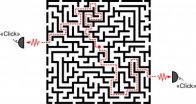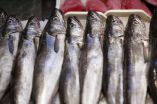(Press-News.org) The first report on the chemical substitution, or doping, using silver atoms, for a new class of superconductor that was only discovered this year, is about to be published in EPJ B. Chinese scientists from Institute of Solid State Physics, Chinese Academy of Sciences, Hefei, discovered that the superconductivity is intrinsic rather than created by impurities in this material with a sandwich-style layered structure made of bismuth oxysulphide (Bi4O4S3).
Superconductors with a transition temperature (TC) above the boiling temperature of liquid nitrogen (77 kelvins or −196 °C) are called high TC superconductors. In the quest for such materials, compounds with bismuth disulphide (BiS2) layers have recently started to attract a lot of attention. Indeed, in July 2012, Japanese scientists reported achieving a TC at around 4.5 kelvins (-268.65 °C) with the first bismuth oxysulphide superconductor.
All the superconducting samples for this new superconductor reported so far are a mixture of Bi4O4S3 and impurities. However, the pure sample without impurities is not superconducting. Scientists have therefore been wondering whether the observed superconductivity stems from the presence of impurities.
The Hefei team performed systematic measurement of the material's characteristics relying on x-ray diffraction, magnetic susceptibility, electrical transport and thermal transport. Using comparison of the x-ray diffraction patterns, they found that silver atoms partially replace the bismuth sites in the bismuth oxysulphide lattice.
Further experiments involved controlling the composition of the material through various levels of silver doping. The superconductivity, the authors found, was suppressed as the silver content increases and eventually disappears above a certain doping threshold. They believe that it is the modification of electronic structure upon doping that suppresses the superconductivity.
Based on these observations, they concluded that the observed superconductivity originates from the bismuth oxysulphide lattice rather than any impurities.
###
Reference:
1. S. G. Tan, P. Tong, Y. Liu, W. J. Lu, L. J. Li, B. C. Zhao, Y. P. Sun (2012), Suppression of superconductivity in layered Bi4O4S3 by Ag doping, European Physical Journal B, DOI: 10.1140/epjb/e2012-30975-2
2. Mizuguchi et al. arXiv:1207.3145 [cond-mat.supr-con]
For more information, please visit www.epj.org
The full-text article is available to journalists on request.
Silver sheds light on superconductor secrets
By doping a bismuth-based layered material with silver, Chinese scientists demonstrated that superconductivity is intrinsic to the new material rather than stemming from its impurities
2012-12-20
ELSE PRESS RELEASES FROM THIS DATE:
Gene expression improves the definition of a breast cancer subtype
2012-12-20
The study conducted by the Vall d'Hebron Institute of Oncology (VHIO) in conjunction with the GEICAM cooperative group and other American and Canadian researchers has led to a change in the definition of hormone-sensitive breast tumours.
Barcelona, 20 December 2012. Gene expression in breast cancer provides valuable biological information for better determining the diagnosis, treatment, risk of relapse and survival rate. However, the most common form of characterizing breast cancer is by histopathological techniques. This study, headed by Dr Aleix Prat, Head of the Translational ...
2 problems in chemical catalysis solved
2012-12-20
The research group of Professor Petri Pihko at the Department of Chemistry and the NanoScience Center of the University of Jyväskylä has solved two acute problems in chemical catalysis. The research has been funded by the Academy of Finland.
In the first project, the researchers designed a novel intramolecularly assisted catalyst for the synthesis of beta amino acids. Previously published catalysts work only with aromatic side chains in the imines, but the new catalyst designed at Jyväskylä does not have this limitation. The new method might find uses in the synthesis ...
Stroke drug kills bacteria that cause ulcers and tuberculosis
2012-12-20
Bethesda, MD—A drug currently being used to treat ischemic strokes may prove to be a significant advance in the treatment of tuberculosis and ulcers. In a new research report appearing online in The FASEB Journal, a compound called ebselen effectively inhibits the thioredoxin reductase system in a wide variety of bacteria, including Helicobacter pylori which causes gastric ulcers and Mycobacterium tuberculosis which causes tuberculosis. Thioredoxin and thioredoxin reductase proteins are essential for bacteria to make new DNA, and protect them against oxidative stress caused ...
UGA research offers new targets for stroke treatments
2012-12-20
Athens, Ga. – New research from the University of Georgia identifies the mechanisms responsible for regenerating blood vessels in the brain.
Looking for ways to improve outcomes for stroke patients, researchers led by the UGA College of Pharmacy assistant dean for clinical programs Susan Fagan used candesartan, a commonly prescribed medication for lowering blood pressure, to identify specific growth factors in the brain responsible for recovery after a stroke.
The results were published online Dec. 4 in the Journal of Pharmacology and Experimental Therapeutics.
Although ...
Virtual reality and robotics in neurosurgery -- promise and challenges
2012-12-20
Philadelphia, Pa. (December 20, 2012) – Robotic technologies have the potential to help neurosurgeons perform precise, technically demanding operations, together with virtual reality environments to help them navigate through the brain, according to a special supplement to Neurosurgery, official journal of the Congress of Neurological Surgeons. The journal is published by Lippincott Williams & Wilkins, a part of Wolters Kluwer Health.
"Virtual Reality (VR) and robotics are two rapidly expanding fields with growing application within neurosurgery," according to an introductory ...
The paths of photons are random -- but coordinated
2012-12-20
Researchers at the Niels Bohr Institute have demonstrated that photons (light particles) emitted from light sources embedded in a complex and disordered structure are able to mutually coordinate their paths through the medium. This is a consequence of the photons' wave properties, which give rise to the interaction between different possible routes. The results are published in the scientific journal, Physical Review Letters.
The real world is complex and messy. The research field of photonics, which explores and exploits light, is no exception, and in, for example, biological ...
Italian wolves prefer pork to venison
2012-12-20
Some European wolves have a distinct preference for wild boar over other prey, according to new research.
Scientists from Durham University, UK, in collaboration with the University of Sassari in Italy, found that the diet of wolves was consistently dominated by the consumption of wild boar which accounted for about two thirds of total prey biomass, with roe deer accounting for around a third.
The study analysed the remains of prey items in almost 2000 samples of wolf dung over a nine year period and revealed that an increase in roe deer in the wolf diet only occurred ...
33 new trapdoor spider species discovered in the American southwest
2012-12-20
A researcher at the Auburn University Museum of Natural History and Department of Biological Sciences has reported the discovery 33 new trapdoor spider species from the American Southwest. These newly described species all belong to the genus Aptostichus that now contains 40 species, two of which are already famous – Aptostichus stephencolberti and Aptostichus angelinajolieae.
The genus now includes other such notable species as Aptostichus barackobamai, named for Barack Obama, the 44th President of the United States, and reputed fan of Spiderman comics; Aptostichus edwardabbeyi, ...
Cellphone data helps pinpoint source of traffic tie-ups
2012-12-20
CAMBRIDGE, Mass. -- In most cities, traffic growth has outpaced road capacity, leading to increased congestion, particularly during the morning and evening commutes. In 2007, congestion on U.S. roads was responsible for 4.2 billion hours of additional travel time, as well as 2.8 billion gallons of fuel consumption and an accompanying increase in air pollution.
One way to prevent traffic tie-ups is to have fewer cars on the road by encouraging alternatives such as public transportation, carpooling, flex time and working from home. But a new study — by researchers at MIT, ...
Spanish consumers prefer national fish
2012-12-20
What is most important when buying fish: the price, the country of origin, whether it is fresh or frozen or whether it is wild or farm-raised? The average Spanish consumer prefers above all that their fish comes from Spain, according to a study published in the 'Food Quality and Preference' journal. Spain is the largest producer of fish in the European Union but in recent years its population has consumed less fish, especially seafood.
A team of scientists brought together nearly 900 consumers from nine Autonomous Communities (Andalusia, Asturias, the Balearic Islands, ...
LAST 30 PRESS RELEASES:
NTP-enhanced lattice oxygen activation in Ce-Co catalysts for low-temperature soot combustion
Synergistic interface engineering in Cu-Zn-Ce catalysts for efficient CO2 hydrogenation to methanol
COVID-19 leaves a lasting mark on the human brain
Scientists use ultrasound to soften and treat cancer tumors without damaging healthy tissue
Community swimming program for Black youth boosts skills, sense of belonging, study finds
Specific depressive symptoms in midlife linked to increased dementia risk
An ‘illuminating’ design sheds light on cholesterol
Who is more likely to get long COVID?
Study showcases resilience and rapid growth of “living rocks”
Naval Research Lab diver earns Office of Naval Research 2025 Sailor of the Year
New Mayo-led study establishes practical definition for rapidly progressive dementia
Fossil fuel industry’s “climate false solutions” reinforce its power and aggravate environmental injustice
Researchers reveal bias in a widely used measure of algorithm performance
Alcohol causes cancer. A study from IOCB Prague confirms damage to DNA and shows how cells defend against it
Hidden viruses in wastewater treatment may shape public health risks, study finds
Unlock the power of nature: how biomass can transform climate mitigation
Biochar reshapes hidden soil microbes that capture carbon dioxide in farmland
Reducing saturated fat intake shows mortality benefit, but only in high-risk individuals
Manta rays create mobile ecosystems, study finds
Study: Mixed results in using lipoic acid to treat progressive multiple sclerosis
Norbert Holtkamp appointed director of Fermi National Accelerator Laboratory
New agentic AI platform accelerates advanced optics design
Biologists discover neurons use physical signals — not electricity — to stabilize communication
Researchers discover that a hormone can access the brain by hitchhiking
University of Oklahoma researcher awarded funding to pursue AI-powered material design
Exploring how the visual system recovers following injury
Support for parents with infants at pediatric check-ups leads to better reading and math skills in elementary school
Kids’ behavioral health is a growing share of family health costs
Day & night: Cancer disrupts the brain’s natural rhythm
COVID-19 vaccination significantly reduces risk to pregnant women and baby
[Press-News.org] Silver sheds light on superconductor secretsBy doping a bismuth-based layered material with silver, Chinese scientists demonstrated that superconductivity is intrinsic to the new material rather than stemming from its impurities


